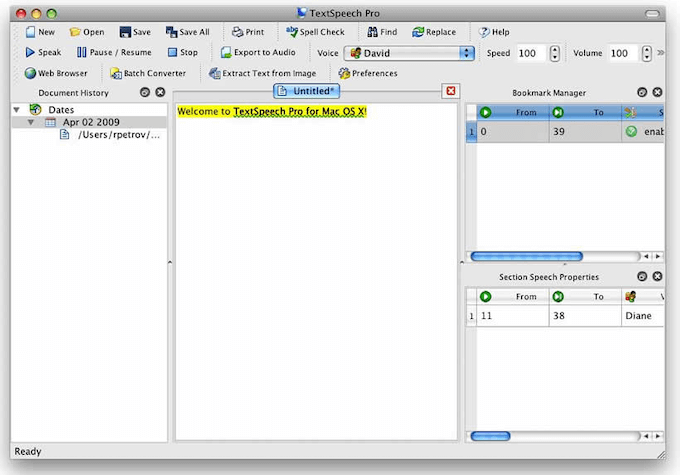
- NARRATOR FOR MAC OS FOR FREE
- NARRATOR FOR MAC OS HOW TO
- NARRATOR FOR MAC OS MAC OS
- NARRATOR FOR MAC OS PDF
I find this style of assuming the reader knows VoiceOver both respectful and quite refreshing. There is, however, a handy appendix listing the VoiceOver commands the user will need to work effectively with Pages.
NARRATOR FOR MAC OS HOW TO
In another place the authors advise the reader to create Hotspots to help navigate quickly to certain screen controls, but a text review describing what a Hotspot is and how to create one is not provided. A few examples: The authors instruct the user in any number of situations to "bring the mouse." Only once do they mention that this means synching the mouse cursor to the VO cursor, and that the key command to do so is VO + Command + F5. There is little hand-holding when it comes to navigating text or issuing commands. This book assumes that the reader has a fairly comprehensive working knowledge of how to use the Mac screen reader. I think a few tips and tricks would have made an excellent concluding chapter.Īnother thing you will not find here is a VoiceOver tutorial. The book does not cover the iOS version, which is a shame.
NARRATOR FOR MAC OS FOR FREE
My Mac Pages teaches the Mac version of Pages, available for free from the Mac App Store. I also wanted to follow along as I read using my own copy of Pages. I opened the book on my iPhone using Voice Dream Reader.
NARRATOR FOR MAC OS PDF
zip file contains three copies of the book: an ePub version, a Pages accessible file, and a PDF file. The couple has taught many classes on running Pages with VoiceOver, and Ann is a frequent and well-respected contributor to the MacVisionaries Google Groups list. The latest addition to my personal access bookshelf is My Mac Pages: A VoiceOver Guide to Word Processing, by the husband and wife team of Anne and Archie Robertson. Brisbin has subsequently joined the AccessWorld writing team).

One of my personal favorites is iOS Access for All by Shelly Brisbin (full disclosure: Ms.


We've reviewed a number of these titles here at AccessWorld. There are also a number of books that take deep dives into getting things done using accessibility. The major screen reader companies go to great lengths to provide resources to help their users, including this repository of free webinars from Freedom Scientific, and this roster of Window-Eyes webinars from Ai Squared.įor the built-in access solutions, the blindness community has needed to step up and crowd source their own resources, which include dozens of excellent podcasts, mailing lists, and websites devoted to helping one another with screen access needs. (Google remains conspicuous by their absence: they still rely on crowd-sourced accessibility support.)Īs any user of a screen reader can tell you, there is a difference between learning the functions of a screen reader's various commands and actually using them to compose documents, surf the web, and generally get work done. Historically, one-on-one technical support has also been the province of the third-party access companies, though this has changed dramatically during the past several years as both Apple and Microsoft have begun offering telephone and email support for their accessibility products.

They catch up when they can, but third-party screen readers remain in a constant race to see which one can be out of the gate first with new solutions to new problems. The built-in solutions don't always play well with new software that relies on non-standard ways of doing things. On the other hand, there is also a lot to be said for third-party solutions, such as JAWS, Window-Eyes, and NVDA. Even Windows has its built-in (albeit limited) offering, Narrator.
NARRATOR FOR MAC OS MAC OS
There is a lot to be said for built-in screen access, such as is provided on iOS, Android, Chrome OS, and Mac OS X.


 0 kommentar(er)
0 kommentar(er)
